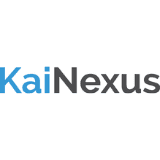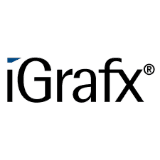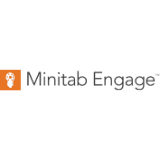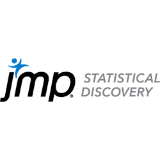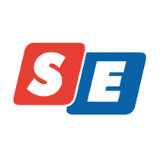- Free Version: Available for teams of up to 10
- Pricing: Premium plan $24/month (with free 30-day trial period)
- Platforms supported: Available on mobile app (iOS and Android) or a web-based software
Why use SafetyCulture?
SafetyCulture is a digital tool that will help your business streamline workflows, standardize processes, and solve logistics problems by doing away with paper inspection records and saving your data in the cloud. Unlike other six sigma tools, the SafetyCulture Lean Six Sigma software makes it easy to use and understand the Lean Six Sigma method. With its intuitive interface that’s beginner-friendly, you can start changing and improving processes in no time. This app is best for teams across industries and business sizes.
Features:
- Export, visualize, and compare relevant Lean Six Sigma data using the SafetyCulture Exporter and powerful integrations such as Tableau and PowerBI to access all project management data, worker information, and your overall quality management insights in one place
- Capture issues and monitor flagged items in real-time by letting your quality managers and employees use the free Lean Six Sigma app on their mobile devices and provide media documentation such as photos and videos as evidence
- Use the app’s Drawing Field feature to allow for better a visual representation of how employees shall do their job more effectively, thus reducing process variation and improving quality control
- Conduct process audits and inspections using smart, customizable checklists and templates you can use for standard checks
- Create and automate logical workflows in assigning corrective and preventive actions (CAPA), such as scheduling inspections and other tasks to prevent overlooking important projects
- Resolve issues and improve processes quicker through fast and intuitive reporting, which is key to gaining insights into your organization’s inspection and audit performance
- Store and automatically organize all Lean Six Sigma-related documents such as progress reports in secure cloud storage for future reference
- Turn data captured from inspections into actionable insights for risk assessments, continuous improvement, and quality assurance
- Keep everyone informed, trained, and guided on process improvements, Standard Operating Procedures (SOPs), and other project management protocols using Heads Up
- Have your own forms get converted into digital templates and use them for your Lean Six Sigma projects anytime, anywhere
- Provide Training sessions on Lean Six Sigma practices and ideologies
Why use TRACtion?
As a Lean Six Sigma project management software, TRACtion is a cloud-based solution that aims to help organizations drive process improvement activities, seamless workflow management, and just-in-time support to project teams. This app us best used for complex project management.
Features:
- Seamless project organization and execution
- Multiple charts and graphs for real-time data presentation
- Powerful, flexible reporting
- Project selection tools
- Critical coaching support
- Free Version: Not available
- Pricing: A one-time installation fee of $7,500 for a minimum of 10 users, subject to a separate annual usage fee
- Platforms supported: Web
Why use Tallyfy?
Mainly used as a workflow and process management tool, Tallyfy also functions as a Lean Six Sigma software, allowing project teams to capture and automate every process in the organization without going through complex means and tedious steps. This app is best for organizations with internal and external teams.
Features:
- Workflow, approvals, and handovers automation
- Real-time process status tracking
- API-first, CRM, and Identity integrations
- Structured form fields for making data usable and organized
- Process documentation
- Free Version: Not available
- Pricing: Starts at $5/member/month for a minimum of 10 members billed annually (with a 14-day free trial period)
- Platforms supported: Web
Why use The Lean Way?
The Lean Way empowers organizations to continuously improve their processes and work quality by applying Lean Six Sigma principles and harnessing the power of the organization’s improvement potential using an innovative software solution.
Features:
- Widgets for custom and data-driven charts and figures
- Knowledge wall
- Improvement tool
- Custom boards for private and public workspaces
- Mobile access
- Free Version: Not available
- Pricing: Starts at $20/user/month for 25 users billed annually (with a 14-day free trial period))
- Platforms supported: Web and mobile devices
Why use KaiNexus?
KaiNexus powers Lean Six Sigma through its three-point goal: Unify, Scale, and Support. Using this Lean Six Sigma software’s comprehensive features, organizations across industries are able to start, spread, and sustain their improvement cultures. This app is best used to manage an organization’s continuous improvement efforts.
Features:
- Customizable submission forms
- Data visualization
- Enhanced reporting capabilities
- Cross-functional collaboration
- Streamlined project management and improvement
- Free Version: Not available
- Pricing: Details available upon request
- Platforms supported: Web, iOS, and Android
Why use iGrafx?
Providing comprehensive business transformation solutions, iGrafx enables organizations to use a unique solution for process improvement and waste elimination, among others. This is to help them better serve their customers, enhance productivity, and improve their business bottom line. This app is best for manufacturing and service companies.
Features:
- Workflow automation
- Process analysis and simulation
- Risk mining
- System of record integration
- Value stream mapping
- Free Version: Not available
- Pricing: Custom pricing details available upon request (with a A 30-day free trial period)
- Platforms supported: Web
Why use Minitab Engage?
Minitab Engage provides organizations with customizable tools for the efficient execution of their Lean Six Sigma projects. This Lean Six Sigma software enables teams to easily start, track, manage, and share innovation and improvement efforts across the board.
Features:
- ROI measuring
- Secure cloud dashboard
- Workflow automation
- Project roadmaps
- Forms, mapping tools, and analysis capture tools
- Free Version: Not available
- Pricing: Details available upon request (with a 30-day free trial period)
- Platforms supported: Web
Why use EdApp?
EdApp by SafetyCulture is a web- and mobile-based microlearning software that makes learning easy and accessible for employees wherever they may be. The EdApp software integrates features such as learning metrics and gamification in its lessons to make them more engaging for employees. Using the EdApp software, all QMS- and process improvement-related learning courses can be built and seamlessly cascaded to the intended audience, making standardized learning and development for quality more efficient and easy to update. Further, this app is best for quality supervisors and project managers.
Features:
- Relevant learning courses on Lean Six Sigma best practices that employees can use anytime, anywhere
- Instant, on-demand updates and automated visibility of courses results
- Scheduled spaced repetition between lessons for better knowledge retention
- Free lessons from the course library for different industries
- Secure and easy access for intended trainees such as quality supervisors and project managers, among others
- Integrations with Canva, Zapier, GSuite, SafetyCulture, Okta, Webhooks, BambooHR, and more
- Support to contact when assistance is needed
- Great value for a microlearning software for Lean Six Sigma
Best for:
Pricing: The Pro plan starts at $1.95/active user/month
Free Version: Available
Free Trial: A 30-day free trial is available for the Pro plan
Platforms supported: Web, iOS, and Android
- Free Version: Free plan available
- Pricing: Plans start at $2.95 per user per month (with a 30-day free trial)
- Platforms supported: Available on mobile app (iOS and Android) or a web-based software
Why use JMP?
Mainly used for data analysis, JMP’s smart, easy-to-use interface provides a full spectrum of industry-standard capabilities in performing Lean Six Sigma methodologies for data-driven process and product improvement programs. This app is best for healthcare and chemical industries.
Features:
- Interactive process control and capability analysis
- Data visualization
- Statistical Process Control (SPC) charts
- Measurement Systems Analysis (MSA)
- Process Screening
- Free Version: Not available
- Pricing: Starts at $125/month (with a 30-day free trial)
- Platforms supported: Web
Why use SoftExpert?
Offering solutions for compliance management, SoftExpert software helps companies apply and adhere to the Lean Six Sigma methodology toward lowered compliance costs, maximized efficiency, and reduced risks. This app us best used for business compliance management.
Features:
- Supplier quality control
- Risk management
- Defect tracking
- Audit management
- ISO standards management
- Free Version: Not available
- Pricing: Starts at $200/user/month
- Platforms supported: Web, iOS, and Android
What is a Lean Six Sigma Software?
A Lean Six Sigma software, in simple terms, is any software that helps you perform Lean Six Sigma regularly. The expected outcomes of using Lean Six Sigma software are increased efficiency, standardized operations, and higher productivity. It can be used by any business looking to improve its processes.
Importance
Most of the Lean Six Sigma software tools available today are overly complicated and confusing, resulting in employees becoming intimidated by the Lean Six Sigma method in general. This is why it’s important for an organization to understand its needs and goals to be able to pick the most suitable platform to use in managing tasks, projects, and systems using Lean Six Sigma practices. Maximizing the smart features and functionalities of a Lean Six Sigma software helps improve productivity and achieve maximum efficiency across the board.
Additionally, Lean Six Sigma software solutions allow organizations to enjoy the following benefits:
Create Custom Lean Six Sigma Templates
While some Lean Six Sigma software solutions have several pre-made Lean Six Sigma templates that you can use and download for free, you also have the option of creating your own custom Lean Six Sigma template within the software’s template editor. You can also add a variety of response types to your templates, including multiple-choice items, logic fields, files, photos, text answers, numbers, and more.
Find Sources of Waste and Variation Easily
A Lean Six Sigma software makes it easy for you to spot trends and patterns so that you can fix inefficiencies in a snap. View commonly failed items across facilities, departments, and processes. Delve deep into why a problem occurred in the first place by conferring with your teammates.
Act on Analytics for Maximum Efficiency
This kind of software has the functionality to combine data and actions into one powerful analytics dashboard. You can set scoring systems in your templates to see their averages in the form of percentages and graphs. To make the most out of the Lean Six Sigma software you’re using, you can also create an action for each issue spotted and input the due date, status, and priority for it to show up in your dashboard.
Applying Lean Six Sigma Using Software
Though many in the manufacturing industry are already familiar with the Lean Six Sigma method, for those at a loss as to how to actually apply it in their business operations, here are a few steps to help you get started:
Collect Consistent Data
Before you can even begin improving your processes, you have to understand them first. And to do this, you need data. While gathering and organizing data can be time-consuming, it’s still an essential step since the backbone of Lean Six Sigma is ultimately data.
However, this does not necessarily mean that you have to start from scratch. If you already have solid documentation of your business processes and they’re on paper, you can use these valuable sources of information by converting them into digital files.
If you do not have any valid records of your systems, then you can start by conducting an audit. There are many different types of audits for various industries. While audits are mostly third-party examinations of a business in order to assess its compliance with standards and regulations, businesses themselves may perform internal audits for process improvement.
Pinpoint Problem Areas
Now that you have all your data in one place, you can begin identifying areas or phases within the process where problems frequently occur. However, take note that the strength of this step relies on the robustness of your issue-raising platform. After all, if day-to-day issues aren’t flagged by your employees, then neither you nor their manager would be able to see or notice that a problem needs to be solved.
Embrace Teamwork
For businesses looking to fully implement the Lean Six Sigma method and not just apply some of the principles, one of the most vital actions you need to take is to form a cross-functional team. While this may not be necessary for smaller businesses or ones with a completely integrated workforce, it is crucial for medium to large-sized enterprises with isolated departments.
When forming your cross-functional team for Lean Six Sigma, you need to ensure that there’s a knowledgeable representative from each department. This person must be adept at the previous and current processes that the department is using and have good communication and coordination skills.
Grow With Change
While the earlier steps reviewed the effectiveness of your operations by analyzing your processes, this last step is focused on both attitude and action. For Lean Six Sigma initiatives, it’s ideal for you, your employees, and their managers to have an open-minded attitude that is eager to change. Why? Because change brings about innovation if handled successfully.
However, while having the right attitude is a good start, it can only get you so far. Even if you have the best intentions and ideas, if your execution is lacking, then the impact of any solution you come up with is minimized to the point of only slightly improving a small part of the process. That’s why it’s critical to turn any issues you’ve encountered while doing Lean Six Sigma into feasible actions that can be adapted to change.
How to Pick the Best Lean Six Sigma Software
To help you choose, top Lean Six Sigma software programs must have these features:
- Smart Templates – Create unlimited smart templates and convert your existing paper forms to digital templates.
- Inspections – Complete inspections from anywhere at any time with a Lean Six Sigma software program.
- Fast Reporting – Detailed inspection reports help problems get solved quicker.
- Insights & Analytics – Turn your Lean Six Sigma data into actionable insights.
- Integrations – Connect your other to business software systems such as Tableau, Sharepoint and more.
- Workflow Automation – Automate the boring stuff—from scheduling inspections to sharing reports.
For a quick overview of which Lean Six Sigma software is best suited for your needs, here’s a roundup of our best 10:
- Best Overall: SafetyCulture
- Best for Complex Project Management: TRACtion
- Best for Organizations with Internal and External Teams: Tallyfy
- Best for Enterprises: The Lean Way
- Best for Managing Continuous Improvement Efforts: KaiNexus
- Best for Manufacturing and Service Companies: iGrafx
- Best for All Industries: Minitab Engage
- Best for Quality Supervisors and Project Managers: EdApp by SafetyCulture
- Best for Healthcare and Chemical Industries: JMP
- Best for Business Compliance Management: SoftExpert
You may also use this table for the comparison of free version availability, pricing of paid plans, and mobile app capability:
| Lean Six Sigma Software | Free Version | Paid Plan | Mobile App |
| SafetyCulture | Yes | $19/month/10 users | Yes |
| TRACtion | None | $7,500* | None |
| Tallyfy | None | $5/member/month** | None |
| The Lean Way | None | $20/user/month*** | Yes |
| KaiNexus | None | Details upon request | Yes |
| iGrafx | None | Details upon request | None |
| Minitab Engage | None | Details upon request | None |
| EdApp by SafetyCulture | Yes | $1.95/user/month | Yes |
| JMP | None | $125/month | None |
| SoftExpert | None | $200/user/month | Yes |
* one-time installation fee for a minimum of 10 users, with a separate annual usage fee
** for a minimum of 10 members billed annually
*** for 25 users billed annually
To better support your Lean Six Sigma efforts, utilize other related apps and software solutions in improving your processes, maintaining quality, and enhancing your organization’s overall productivity:
- Kaizen App to help ensure continuous improvement every day in the workplace
- Project Management Software to assign tasks, schedule activities, track progress, and monitor resources
- Workflow Software to manage documents and processes
- Quality Control App to streamline quality control inspection processes
- QMS Software to standardize operations and enhance quality in your organization
You may also check out these ready-to-use Lean Six Sigma checklist templates you can download and customize using SafetyCulture:




